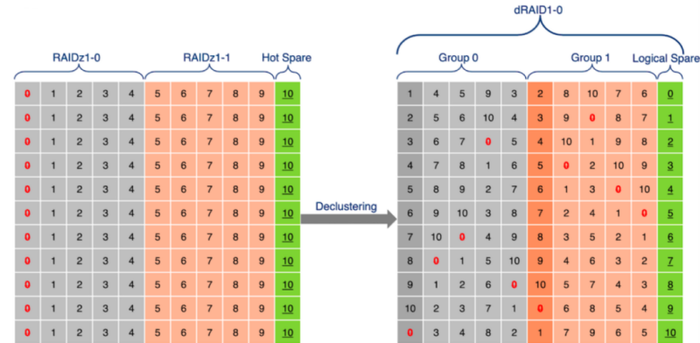
Writing superblocks and filesystem accounting information: doneįilesystem Size Used Avail Use% Mounted on We also find useful information in /proc/mdstat: # cat /proc/mdstat So our RAID of partitions has been created, but like any device, it does not yet have a filesystem and it hasn’t been mounted. /dev/sdb1 and /dev/sdc1 are the two partitions included in our array of independent disks.–raid-devices=2 lets mdadm know to expect two physical disks for this array.

Level 0 is just striped, with no redundancy.

We’ll start with two identical disks or partitions, and create a striped RAID 0 device.įirst, let’s make sure we have the correct partitions. That’s 83%, compared to 50% of our drives were mirrored in RAID 1. For example, if we have 6 drives of 1 terabyte, our RAID 5 will have 5 terabytes of usable space. A quick way to estimate storage is the total amount of equal-sized drives, minus one drive. RAID 5 gives us more usable storage than mirroring does, but at the price of some performance. That means a RAID 6 can recover from two failed members. RAID 6 is similar to RAID 5 but sets aside two disks’ worth for parity data. If two or more drives crash, we’ll have to restore the whole thing from backups. RAID 5 can recover and rebuild with no data loss if one drive dies. Similarly, the RAID’s performance will be limited by its slowest member. Adding a larger drive won’t get us more space, as the RAID will just use the size of the smallest member. This means we usually want to build our RAID out of a set of drives of identical size and speed. It is not all kept on one drive, however instead, the parity data is striped across all of the devices along with the filesystem data. RAID 5 sets aside one drive’s worth of space for checksum parity data. In practice, we can add several more, though rarely more than ten are used.

RAID 5 requires at least three equal-size drives to function. Parity allows our RAIDs to reconstruct data stored on failed drives. Instead of storing complete copies of our data, we can save space by storing parity data.


 0 kommentar(er)
0 kommentar(er)
